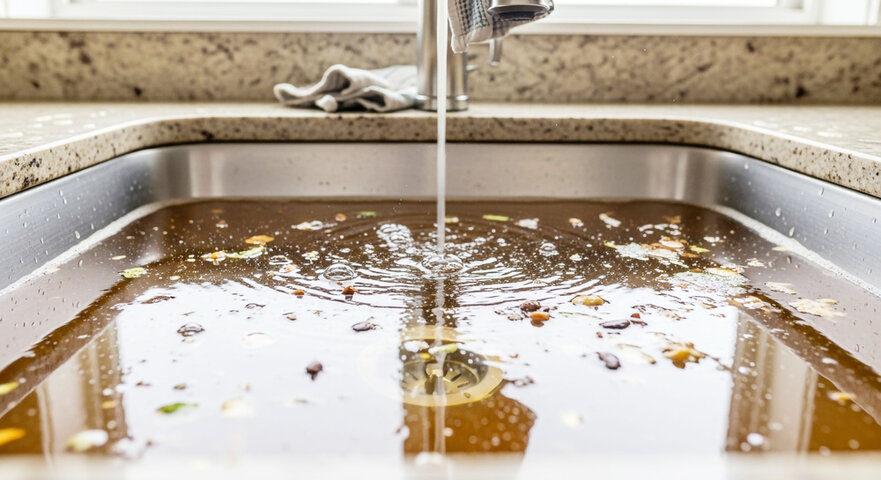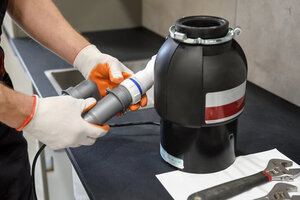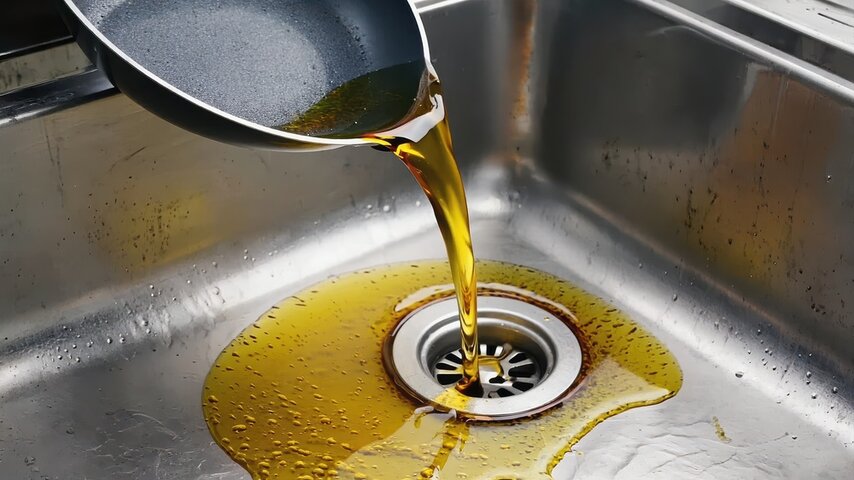Fast, clean, and professional kitchen sink and disposal line clearing for Southeast Wisconsin homeowners.
Call WI: (262) 515-9151 • Call IL: (847) 350-8383 • Book Online
Why your kitchen sink won’t drain (and what we do about it)
The kitchen line carries fats, oils, and grease (FOG), food scraps, soap, and grit. Over time these build up in the P‑trap, branch line, and tie‑in to the main sewer, narrowing the pipe until the sink won’t drain—or backs up into the dishwasher or the second bowl.
Common symptoms:
- Standing water in the sink or slow draining after washing dishes
- Gurgling, bubbling, or sewer odors from the sink
- Water backing up from one bowl to the other
- Dishwasher draining into the sink or onto the floor
- Frequent clogs that return quickly after DIY fixes
Get Same‑Day Kitchen Drain Service or call (262) 515‑9151.
Our 4‑Step Kitchen Line Cleaning Process
1. Diagnose
We find the best access (removing the P‑trap, using the cleanout, or working through the disposal connection). We test fixtures and, when helpful, use micro‑cameras to confirm the problem area.
2. Clean
We choose the right method for your pipe size and material:
- Professional cabling/rodding to cut through heavy buildup and debris
- Small‑line hydro‑jetting (1½–2” pipe) to scrub grease from pipe walls for a longer‑lasting result
3. Verify
We run sink and dishwasher drain tests to ensure full flow is restored and no leaks at the trap or connections.
4. Prevent
We review best practices and can leave enzyme drain treatment and a maintenance schedule so clogs don’t return.
Clear My Kitchen Drain Now — Technicians on call 24/7.
What causes kitchen sink clogs?

- FOG: fats, oils, grease cool and solidify in the line
- Starches & fibrous foods: rice, pasta, potato peels, celery strings
- Coffee grounds & egg shells that settle and accumulate
- Soap scum & mineral scale in older pipes
- Disposal issues: dull blades or jams pushing debris downstream
If we find damage (settled or corroded pipe), we’ll show you on camera and explain repair options—no pressure, just facts.
Garbage Disposal Help
- Jammed or humming? We can safely clear jams and check the reset and wiring.
- Leaking or seized? We’ll quote repair or replacement on the spot and install the right size/discharge for your sink and dishwasher.
Talk to a Tech in Kenosha/Racine, or call (847) 350‑8383 for Illinois border communities.

Safe, Transparent Pricing

You’ll get a clear, upfront price after a quick diagnosis. If small‑line jetting or camera inspection would add value, we’ll explain why and get your okay first. No surprises. Ask about our limited warranty on kitchen line cleaning (line condition applies).
Popular add‑ons:
- Micro‑camera inspection with clips you can keep
- Small‑line hydro‑jetting for heavy grease lines
- Scheduled maintenance (every 6–12 months for heavy‑use kitchens)
Request a Quote — Ask about today’s same‑day openings.
Do’s & Don’ts for a Healthy Kitchen Drain
Do:
- Wipe pans with a paper towel before washing
- Run cold water when using the disposal, then a final hot rinse
- Use enzyme treatment monthly for heavy‑use kitchens
Don’t:
- Pour fats, oils, or grease down the sink
- Put rice, pasta, peels, or coffee grounds into the disposal
- Mix or pour caustic chemical drain openers—they can damage pipes and create hazards for anyone servicing the line

Service Area
Proudly serving Kenosha, Racine, Pleasant Prairie, Mount Pleasant, Sturtevant, Union Grove, Burlington, Somers, Bristol, Salem Lakes, Paddock Lake, Twin Lakes, Lake Geneva, and surrounding communities.
See All Service Areas or call (262) 515‑9151.
FAQs: Kitchen Drain Cleaning
Why does water come up in the other sink bowl?
Your bowls share the same trap arm. When the line is blocked downstream, water chooses the other path.
Why is my dishwasher backing up into the sink?
The dishwasher drains through the disposal/branch line. A clog past that tie‑in forces water back to the sink.
Are chemical drain cleaners safe?
We don’t recommend them—they can harm pipes and create safety risks. If you’ve used any, please tell us before we begin.
How long does it take?
Most kitchen line cleanings take 45–90 minutes, depending on access, severity, and whether jetting or camera work is needed.
How can I keep this from happening again?
Avoid FOG and fibrous foods, run plenty of water, and consider monthly enzyme treatment. Heavy‑use kitchens benefit from 6–12 month maintenance.
Ready for a free‑flowing kitchen sink?
- Call WI: (262) 515‑9151
- Call IL: (847) 350‑8383
- Or Book Online in under 60 seconds.
